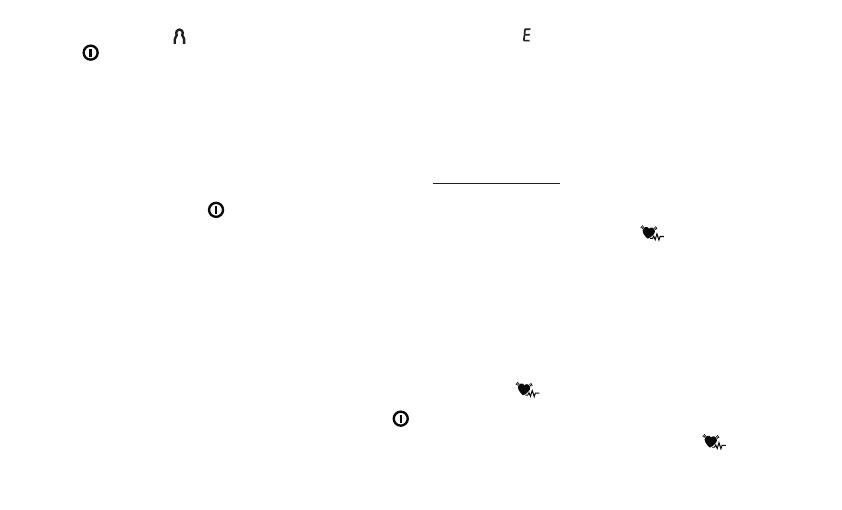
22
user selection button . Confirm your selection by pressing
button .
You have 2 memories with 60 memory spaces each to store the
measurements of 2 different people separately or to separate
measurements taken in the morning and at night.
Performing the blood pressure measurement
• As described above, attach the cuff and adopt the posture
in which you want to perform the measurement.
•
Select the user memory as described above. To start the
measurement, press the button. Following the display
check, an arrow appears and the current memory space and
the date and time are displayed. The cuff pumps itself up au-
tomatically. Whilst the cuff is pumping up, the device already
calculates measurements for estimating the necessary pump
pressure. If this pressure is insufficient, the device automati-
cally pumps more pressure.
•
Then the pressure in the cuff is slowly released and the pulse
is detected.
•
When the measurement has been taken, the remaining air
pressure dissipates very quickly. The pulse, the systolic and
diastolic blood pressure are displayed.
• Measuring can be cancelled at any time by pressing the
button.
•
The symbol _ appears if the measurement could not be
performed properly. Observe the chapter on error messag-
es/trouble-shooting in these instructions for use and repeat
the measurement.
•
T
he device switches off automatically after 2 minutes.
Wait at least 5 minutes before taking another measurement!
Evaluating results
Cardiac arrhythmia:
This device can identify potential disruptions of the heart
rhythm when measuring and if necessary, indicates this after
the measurement with the symbol .
This can be an indicator for arrhythmia. Arrhythmia is an illness
in which the heart rhythm is abnormal because of flaws in the
bioelectrical system that regulates the heartbeat. The symp-
toms (skipped or premature heart beats, pulse being slow or
too fast) can be caused by factors such as heart disease, age,
physical make-up, excess stimulants, stress or lack of sleep.
Arrhythmia can only be determined through an examination
by your doctor.
If the symbol is shown on the display after the measure-
ment has been taken, repeat the measurement. Please ensure
that you rest for 5 minutes beforehand and do not speak or
move during the measurement. If the symbol appears fre-
quently, please consult your doctor. Self-diagnosis and treat-















